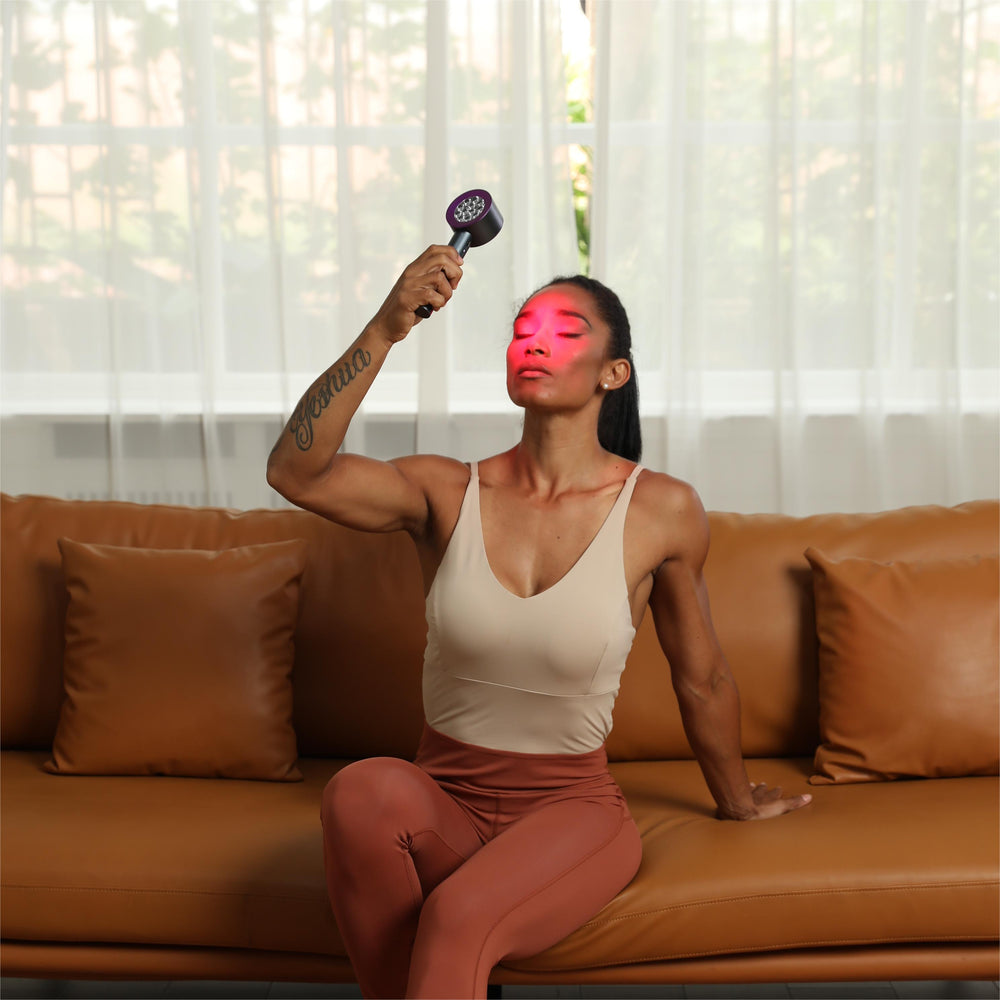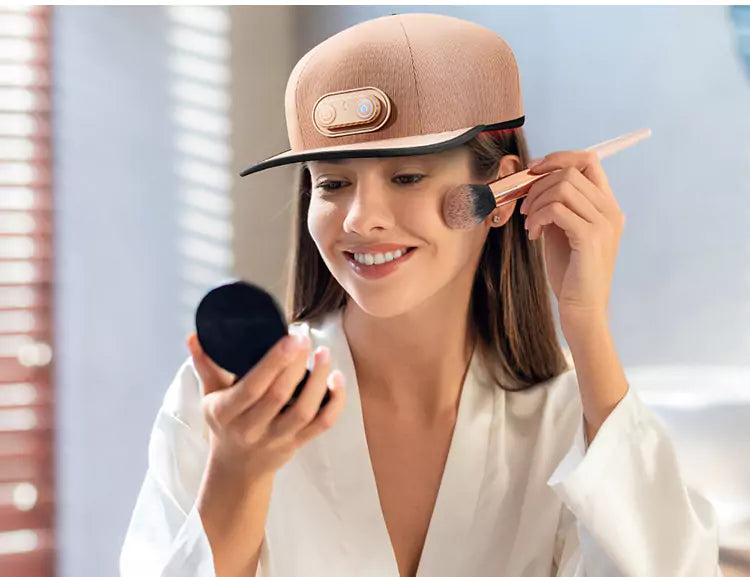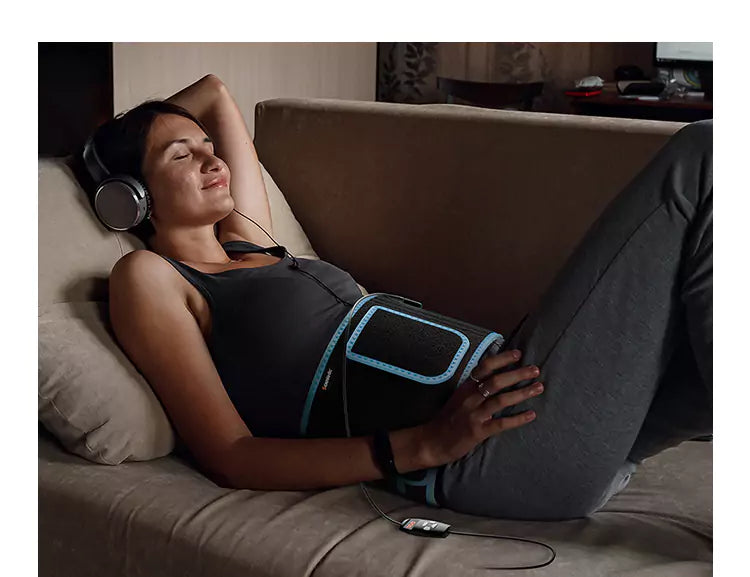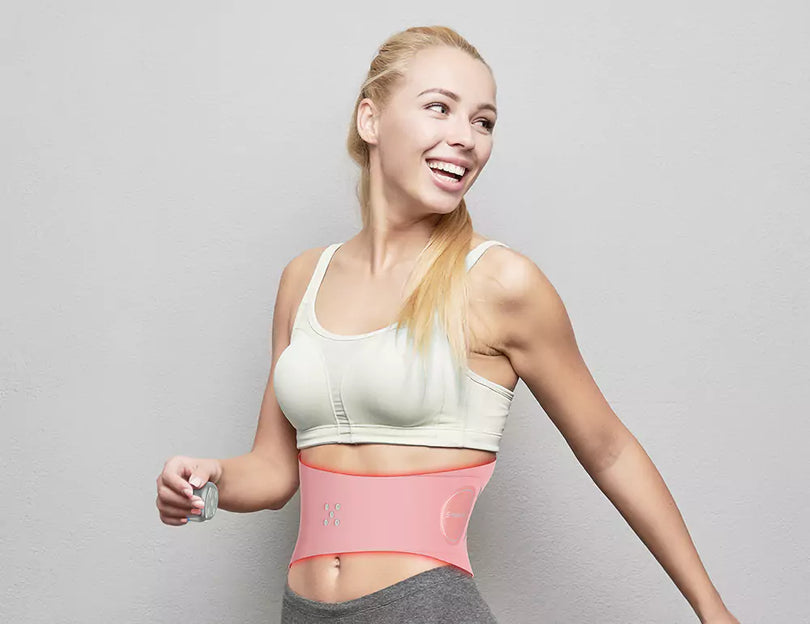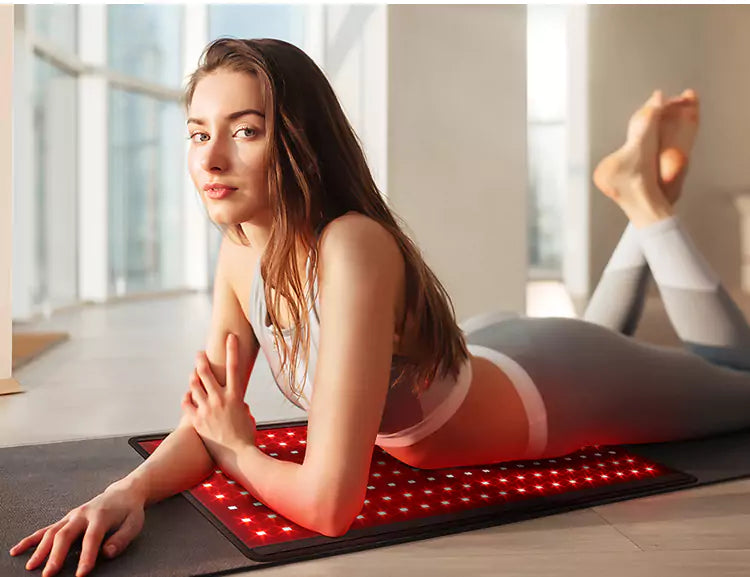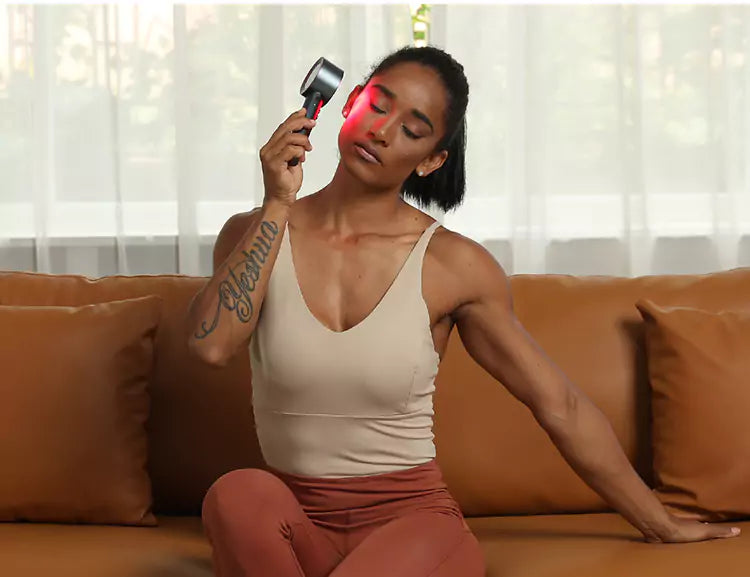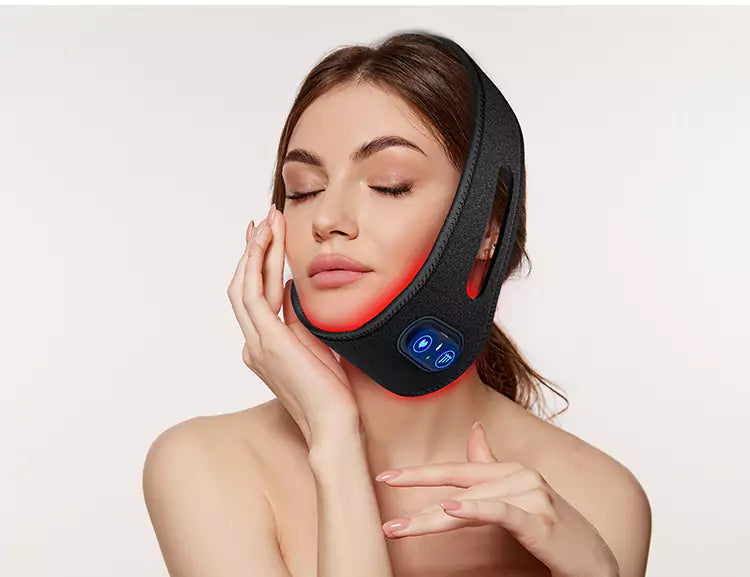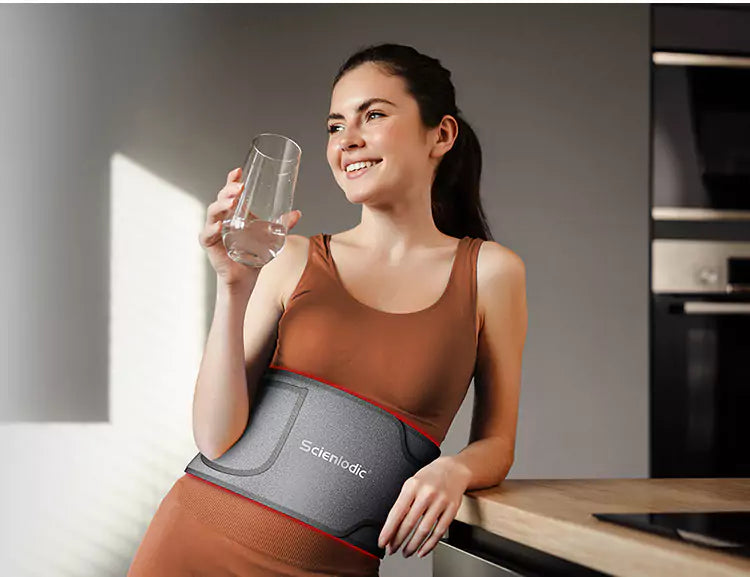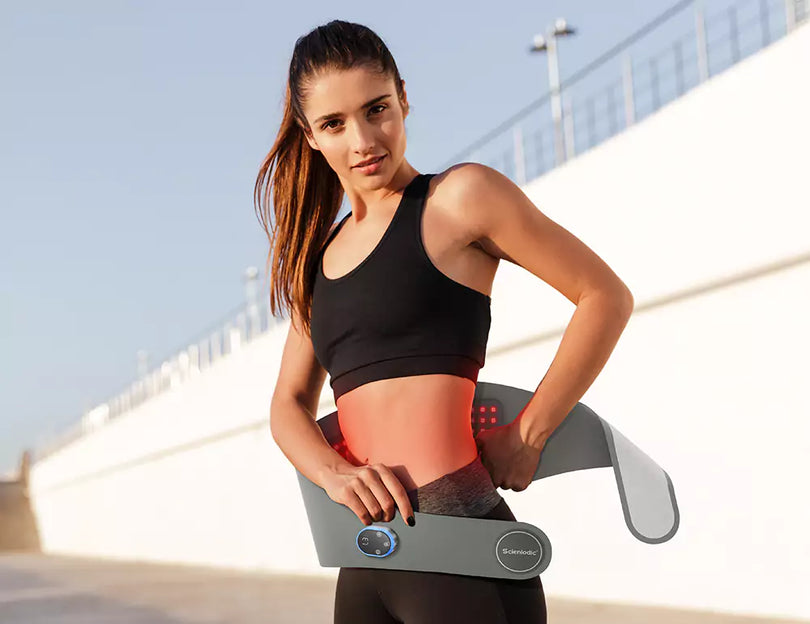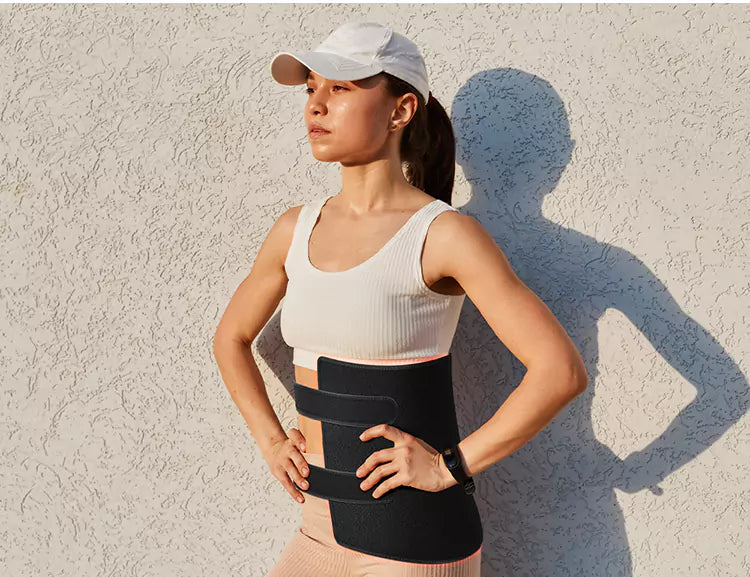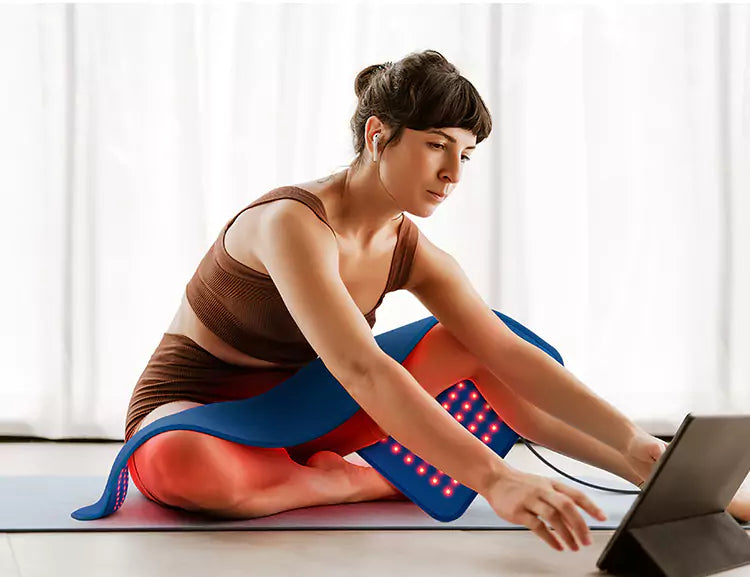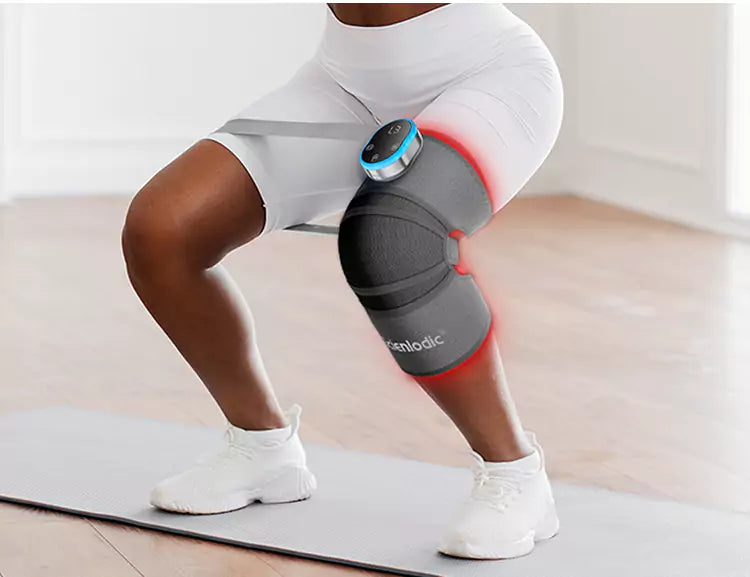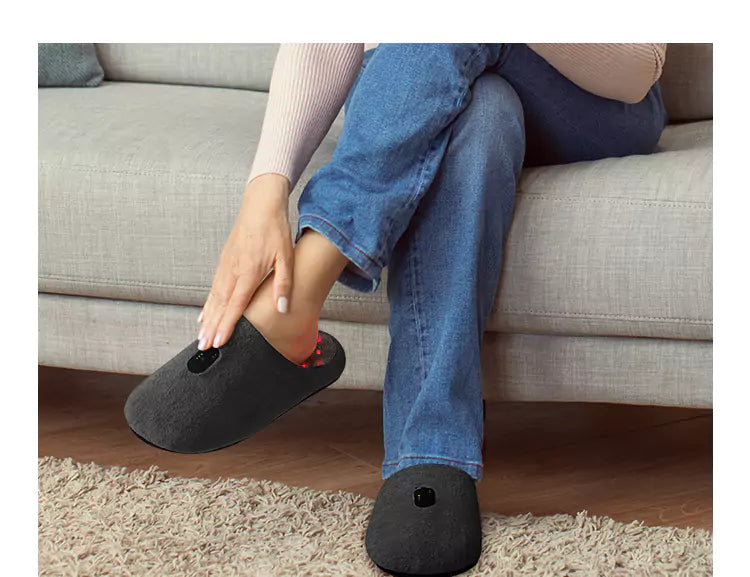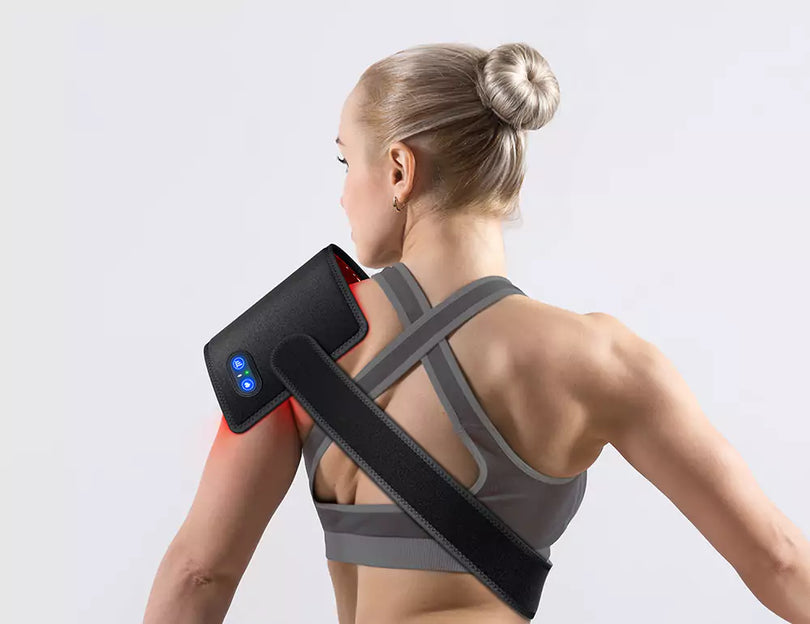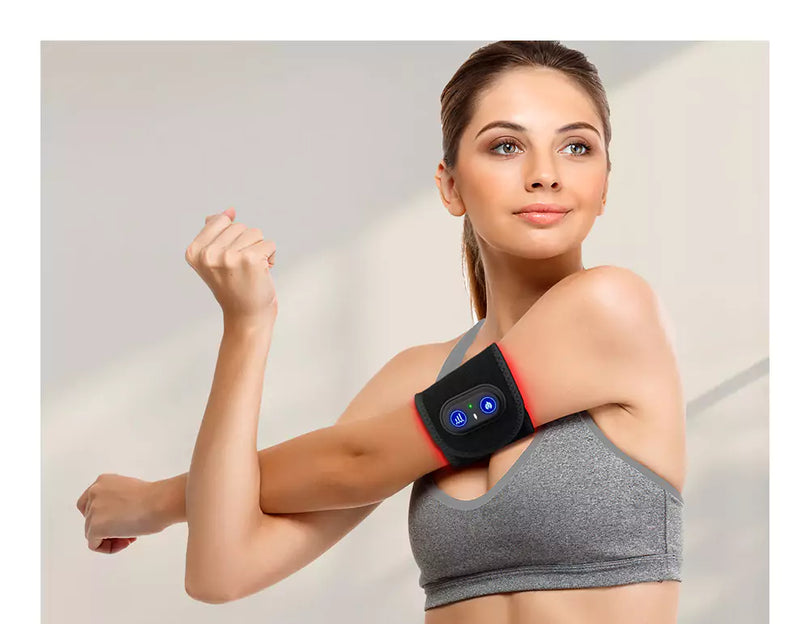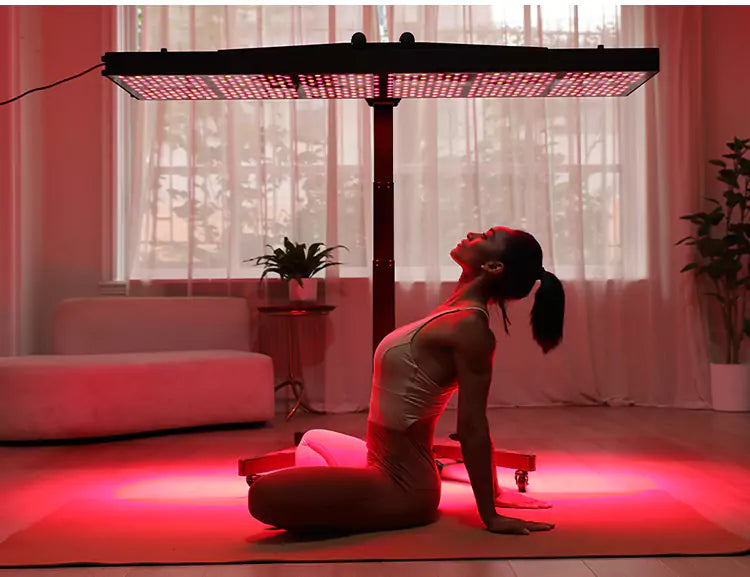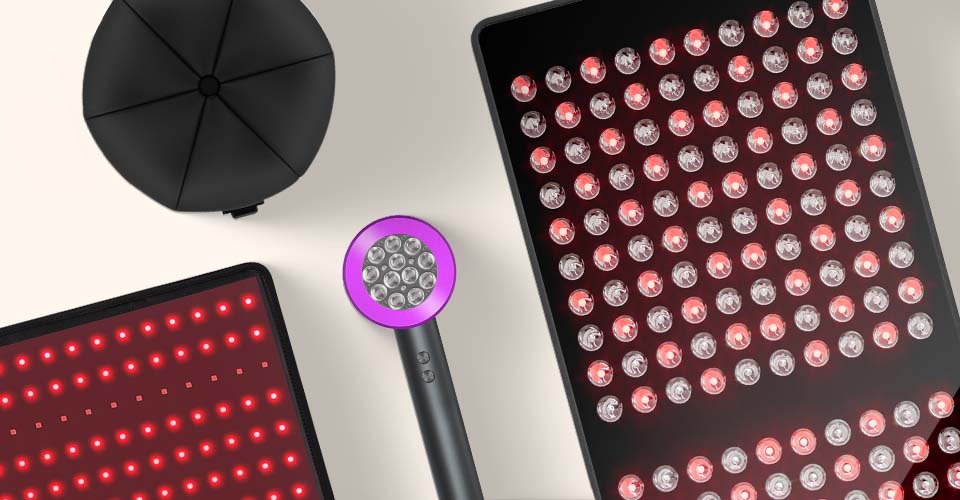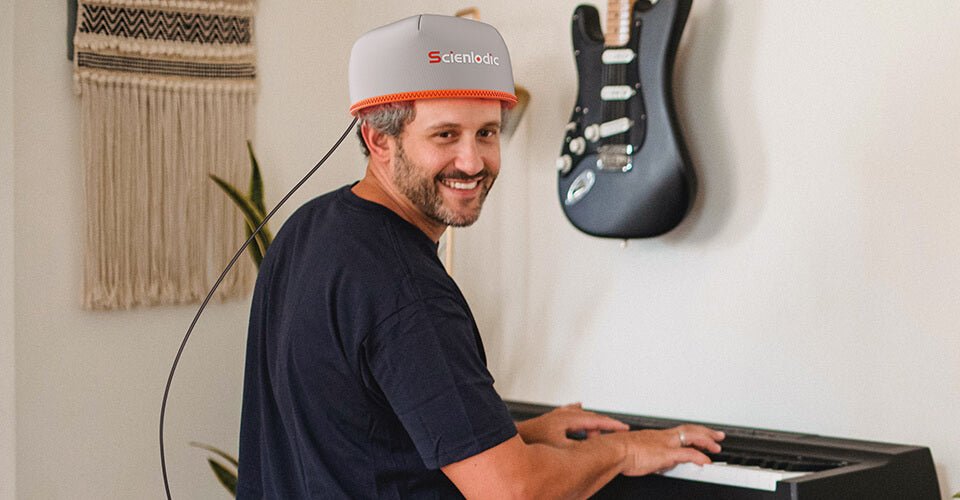Losing fat and weight is often a complex and challenging journey that requires controlled diets, heavy exercise, and a lot of discipline. As a result, many people are searching for alternative solutions that can make fat and weight loss easier and more efficient.
While red light therapy for fat loss is not a magic bullet that can solve the problem of obesity alone, it is a scientifically-based weight loss aid that can make the journey to a healthier weight more manageable.
This article explores the science behind red light therapy for fat loss and how it can help you reach your weight loss goals. In addition, we provide real before and after results achieving can achieve the best outcomes from red light therapy sessions.
Table of Contents
1. What is red light therapy for weight loss?2. What are the red light therapy benefits for weight loss?
3. How to get the best at home red light therapy for weight loss?
4. Red Light Therapy Weight Loss Before And After
5. Conclusion
Whether you're already on a weight loss journey or just starting, read on to discover how red light therapy can help you meet your goals.

What is red light therapy for weight loss?
Before discussing why red light therapy is relevant to weight loss and what it can do, it's essential to understand its past use.
Origin of Red Light Therapy
Red light therapy is a type of light therapy often referred to as low-level light therapy (LLLT), photobiomodulation (PBM), cold laser therapy, low power laser therapy (LPLT), photon stimulation, and so on. It has a century-long development history, but there are two milestones to note.

In 1903, Danish doctor Niels Finsen won the Nobel Prize in Medicine for his discovery that red light could treat muscle diseases, chronic skin diseases, and tuberculosis, among others.
Concentrated "chemical rays”—light without heat—were found to have a bactericidal and a general stimulating effect on tissues and to play an instrumental role in the disfiguring disease lupus vulgaris, a technique he developed through a variety of practical methods. These were Niels Finsen's discoveries, and they were spread by the Finsen Institute, which was later founded in Copenhagen and became widely known.
Although light therapy faded into obscurity in the antibiotic era that followed, Finsen's research remains an essential milestone in the history of red light therapy. Moreover, it has profoundly influenced subsequent analysis and the application of red light therapy.

After the 1980s, NASA's research on regulating plant growth and solving the long-standing problem of space travel intensified. In 1995, they collaborated to develop an LED plant automation system capable of growing potatoes onboard spacecraft.
For the next eight years, they continued to fund experiments with LEDs for medical purposes. The introduction of LEDs into the medical light therapy sector directly accelerated the introduction of red light therapy into the consumer market. Gradually expanding into what is known today as Red Light Therapy.
Red Light Therapy and Weight Loss
Initially, light therapy was not closely related to everyday weight loss needs but was mainly used in medicine.
After reviewing a large number of studies, it became clear that red light therapy is not yet an utterly independent treatment option for obesity. Most studies have small sample sizes and short durations; some have produced conflicting results.
As a result, red light therapy fat loss is still in its infancy and lacks a standardized protocol.
On this basis, all red light fat loss therapy is unclear. So while the exaggerated claims of body-shaping companies may tempt you, it is important to avoid emptying your wallet on treatments that may not be effective.
You need to understand the principles behind red light therapy and be clear about what it can do for you before you start trying it.
What are the red light therapy benefits for weight loss?
Red light therapy is widely used because there is strong evidence that it stimulates the production of adenosine triphosphate (ATP) [1], the primary energy source for all cellular processes.
Light penetrates the skin and is absorbed by the mitochondria, which increases ATP production and enhances cellular function. Although there is no direct evidence of a correlation with weight loss, it is undeniable that red light therapy has many potential benefits for weight loss.
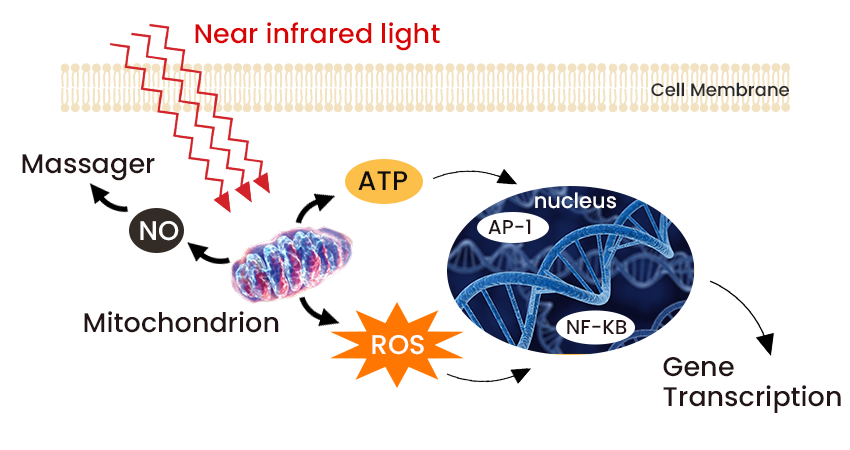
Fat Reduction
Red light therapy does reduce fat. A documented study [2] found that red light therapy was approved by the FDA and confirmed to reduce lipids from adipocytes. However, the mechanism of its action on fat cells remains controversial.
Although the mechanisms behind the use of red light therapy for fat loss are not yet fully understood, some theories suggest that it could involve the formation of temporary adipocyte micropores, allowing the leakage of lipids, or the elevation of ATP, leading to the breakdown of adipocytes.
However, these mechanisms have yet to be consistently replicated in experiments. Nonetheless, what is clear is that red light therapy has shown promise in fat removal.

Cellulite Reduction

Cellulite [3] is caused by fat buildup under the skin, resulting in a lumpy or dimpled look. Women are more likely to have it due to differences in body fat distribution and connective tissue. They tend to have more subcutaneous fat and thinner connective tissue, making fat easier to protrude and create cellulite. Estrogen also affects connective tissue structure and plays a role in cellulite development.
Laser therapy has been shown to improve the appearance of cellulite in the thighs and buttocks. A rigorous comparative trial [4] confirmed that red light therapy for cellulite is safe and effective for improving the appearance of cellulite. In the study group that received low-intensity laser treatment, cellulite appearance was improved without additional interventions.
Body contouring
The claim that "using focused laser energy to destroy and break down fat cells" is an unscientific and unsubstantiated statement frequently promoted by body contouring companies. While it is an objective fact that fat or lipids become smaller and are lost, no significant amount of repeated experimentation can reproduce how this result is achieved.

Another reason for red light contouring is its ability to improve skin elasticity. One study [5] found that the skin of the experimental group significantly increased collagen density after red light treatment.
This reduction in localized fat accumulation resulted in a firmer body appearance, which was not limited to the face. It is worth noting that research into the cosmetic aspects of red light treatment is far more advanced than that into weight loss.
Appetite adjustment
Appetite control is essential to weight management for overweight and obese individuals. However, the truth is that the number of people who can overcome their physiological reflexes to condition their hunger through willpower is in the minority.
Physiological regulation refers to the production of leptin and growth hormone-releasing peptides by fat cells, which reduce and increase appetite.

Light can affect people's appetite, mood, and weight. Treatment with a device that emits bright light during breakfast has been shown to significantly reduce appetite and increase oxygen consumption [6], reducing body fat and appetite in overweight women. These findings suggest that red light therapy could be incorporated into weight management programs.

Insulin resistance reduction
Insulin plays several critical physiological functions in the body. For example, it promotes glucose uptake and utilization, reduces body fat storage, and regulates fat metabolism. This results in less fat storage in the body, which can contribute to weight loss.
However, obese people exposed to high insulin levels for extended periods can develop a vicious insulin resistance cycle and increase obesity. This is why obese people are more likely to develop health problems such as diabetes, cardiovascular disease, and metabolic syndrome.
Red light therapy shows promise as a treatment for insulin resistance and metabolic disorders. Firstly, it is anti-inflammatory, and as chronic low-grade inflammation is linked to insulin resistance, reducing inflammation can improve insulin signaling. One study showed an effective increase in lipocalin concentration [7], an anti-inflammatory adipokine.
Secondly, red light therapy can promote blood flow and improve microcirculation, reducing oxidative stress levels. These effects can improve tissue response to insulin, thereby reducing insulin resistance. Studies of photobiomodulation in human muscle tissue [8] have well-documented these effects.
Thyroid function
In the same way, thyroid function plays an important role in the weight loss process. Thyroid hormones significantly impact weight loss in the following ways:

-
Basal metabolic rate (BMR): Thyroid hormones affect BMR. Normal thyroid hormone levels help maintain a healthy weight. Low thyroid hormone levels decrease BMR, making weight loss difficult. Conversely, high levels of thyroid hormones increase BMR, leading to weight loss.
-
Energy expenditure: Thyroid hormones affect energy expenditure during exercise and at rest. Normal thyroid function helps to burn calories and maintain a healthy weight. Abnormal thyroid function may reduce energy expenditure, making weight loss more difficult.
-
Appetite regulation: Thyroid hormone levels affect appetite regulation. Low thyroid hormone levels may reduce appetite, while high levels may increase appetite.
-
Muscle mass and function: Thyroid hormones are important for muscle growth and repair. Muscle helps to burn calories. Inadequate thyroid function may lead to muscle loss, reducing BMR.
-
Hormone balance: Thyroid hormones interact with other hormones to regulate metabolism and energy balance. Abnormal thyroid function may affect the levels and function of other hormones, affecting the weight loss process.
To achieve healthy weight loss goals, it's important to maintain normal thyroid function and stable metabolism. A six-year follow-up study [9] assigned 43 participants to treatment, concluding that treating hypothyroidism is safe with thyroid function tests, self-assessment questionnaires, side-effect checks, and ultrasound examinations.
While there is no systematic research to prove that red light therapy can be used as a standalone treatment for weight loss, the potential benefits for fat loss seen in over a century of light therapy research must be recognized.
If you are reading this, have become more confident in red light therapy, and can't wait to try your first red light fat loss therapy at a body shaping facility, I think I need to stop you. While we are excited to discuss the potential benefits of red light therapy for fat loss, please don't believe you can only achieve your goals in one session.
Before starting red light therapy, it's important to consult a healthcare professional to determine if it's suitable for your situation. Identifying the underlying cause of obesity is vital to developing an appropriate treatment plan.
To learn more about red light therapy fat loss benefits, you can subscribe to us and click the live chat button at the bottom right. We offer free consultations with red light consultants and will regularly share before and after comparisons of red light therapy.
How to get the best at home red light therapy for weight loss?
So far, all the presentations have been for red light therapy on a medical level. But it has quietly entered the consumer sector, and many established consumer red light therapy brands like Scienlodic offer solutions for everyone at home.
Best red light therapy for weight loss
The best red light combines effect, safety, and cost-effectiveness in the consumer sector.
The most effective red and infrared light for weight loss
Numerous studies have shown that red light in the 630–680 nm wavelength range is most effective for weight loss.
However, we strongly recommend using a combination of wavelengths [10], such as infrared light above 800 nm, which improves blood flow, and red light in the above range, which increases cellular activity. Therefore, please choose the most effective red light when selecting your solution.
In the past, people were eager to use sauna houses or sauna blankets for their treatments. One of the main reasons for this was the belief that the thermal effect of resistive heating materials was the primary factor and the misconception that it was the heat converted from light.
However, whether red or infrared light, they are limited in the heat they can deliver at low levels and are not primarily responsible for the therapeutic effect. Too high an energy density may cause damage, and it is not unfounded to call red light therapy cold laser therapy.
Therefore, to determine its effectiveness, the focus should not be on whether the energy density is high enough (generally more than 50mw/cm² is good) but on selecting the appropriate light source capable of emitting medical-grade, appropriate-wavelength light.
Safe LED light sources
In some known cosmetic applications [11] of laser therapy, some people experience complications such as burns, infections, hyperpigmentation, eye trauma, Kobner's phenomenon, scarring, long-term erythema, acne, milia, and contact dermatitis.
There is no need to choose risky lasers for "potentially faster treatment." LED therapy is gentle and proven to have the same therapeutic effect without any reported negative effects.
Cheap red light therapy weight loss
Easy to use, capable of irradiating large tissue areas in a single session, and cost-effective per megawatt, home LED wearable devices can well replace the laser or red light beds that body shaping facilities charge for expensive single sessions.
You already know what red light fat loss therapy is; all left is choosing the suitable device.
Choose a red light therapy weight loss machine
In recent years, red light therapy for weight loss has become associated with a belted, wrapped device popular with consumers and editors alike. Naturally, nobody wants their waistline to affect their confidence or limit their fashion choices.
Scienlodic Red Light Therapy Weight Loss Belt T210
|
Pros FDA approval Multi-wavelength treatment $199.99 Affordable prices Designed for fat burning at home Safer and efficient LEDs light source Cons Not stylish enough |
|
|
Light Sources |
168 LEDs at 660 nm and 42 LEDs at 850 nm, up to 630 chips |
|
Warranty |
2 years |
|
Design |
Supports wired wrap or lay flat treatment, with home design in mind, such as water and oil resistance and temperature control 21.2*13.7 inches |
The LED beads are designed to reduce safety hazards, and the built-in temperature control protection ensures that the temperature is kept below 45°C (113°F). In addition, an ample number of dual-wavelength combination beads provides optimum weight loss.
The extra transparent layer eliminates concerns about sweat, water, and oil damaging the device, and Scienlodic encourages you to make it part of a healthy exercise lifestyle.
Nushape Lipo Wrap
|
|
Pros FDA approval Multi-wavelength treatment Cons Brand Premium |
|
Light Sources |
Same 600 LED chips at 635 nm/850 nm |
|
Warranty |
1 year |
|
Design |
The same wired wrapped treatment At 51 inches in length |
Nushape appears to be the first brand to address people's weight loss needs with a wearable device. Since 2016, they have been determined to launch belts and wraps focused on weight loss and the women's market. The brand's overall premium feel is evident. The principles of the red light therapy they use are consistent with those of similar products on the market and are backed by science.
Many fat loss products, such as beds, pads, and panels, are on the market. However, these products are typically more expensive and have more features than are necessary for weight loss.
Belts and wraps can cover your waist and limbs, the main areas for weight loss, and are perfectly adequate. If you are on a budget, we strongly recommend considering only these two types of products.
Start your red light therapy weight loss at home
Instead of believing that you can get results from just lying down and receiving red light at body contouring, you should know how to use red light therapy properly, which can help you get the best results for weight loss at home.
Tuning the body for optimal fat burning.
- To maximize the effectiveness of treatment, it is recommended to stop eating around the start of treatment to allow your liver to focus on processing fat.
- Additionally, drink as much water as possible one hour before treatment to increase the metabolism of fat cells, promote hydration, and increase the efficiency of fat burning.
Receive a red light wrap once or twice a day
- Place the red light area directly over where you wish to lose fat. Combine this with light aerobic exercise to activate your body to absorb the energy of the light, and remain in place for 15-20 minutes each time.
- Follow this with high-intensity interval training (HIIT) workouts, such as sit-ups, squats, and push-ups, for the next 20 minutes to maximize the burning off of released lipids
Maintain healthy eating habits
- To effectively flush out residual toxins and fat from your body, you should maintain a daily drinking habit of 8-10 glasses of water not only before and after treatment but also on non-treatment days.
- In addition, you should keep a healthy low-fat, low-carb diet to create a sufficient calorie deficit. Otherwise, all red light therapy will be for naught.
- Adopting a healthy routine and reducing alcohol consumption can help reduce the burden on the liver and improve the efficiency of fat cell processing.
Red Light Therapy Weight Loss Before And After
We found several papers mentioning fat reduction results around the stomach and upper arm circumference after treatment with red light fat loss therapy at 635-680 nm.
Can red light therapy reduce belly fat?
In a randomized controlled trial, 40 healthy men and women aged 18-65 were assigned a 1:1 ratio to receive either laser or control treatment.
Participants were instructed not to change their diet or exercise habits during the test period. Laser treatments were performed twice a week for 30 minutes over four weeks.
In vitro studies have shown that laser treatment increases fat loss from adipocytes by releasing triglycerides without inducing lipolysis or cell lysis, there was an average reduction of 2.5 cm [12] in waist circumference in the experimental group, while there was no significant reduction in the control group.

Can red light therapy reduce limb fat?

Similarly, in a randomized controlled trial of the upper arm, significant differences were observed between the treatment and control groups before and after the test.
Thirty-four women aged 18 to 60 years with upper arm fat accumulation received 20 minutes of 635 nm laser light at each treatment site three times a week for four weeks. The maximum total circumference reduction of the upper arms in the experimental group was 3.7 cm [13].
Achieve weight loss at home in just one month with our Red Light Therapy. Our confidence stems from the abundance of scientific evidence showing statistically significant results in just four weeks.
Subscribe to us to regularly see the results of our users who have undergone Red Light Therapy. Click on the banner below to view the Scienlodic Red Light Therapy Weight Loss Belt and get exclusive discounts and tips by clicking on the Live Chat at the bottom right.
Conclusion
Red light therapy has a wide range of potential benefits for weight loss and body contouring. Furthermore, it is not only available from body shaping companies and aesthetic facilities, as the principles of this treatment support its use in various settings.
You don't have to spend a fortune on facility costs; instead, you can choose home red light therapy equipment according to your budget and specific situation. We recommend the best belts, wraps device, and the safest and most effective LED red light.
Before starting red light therapy, we recommend consulting with a medical professional to determine if it suits your specific situation and to discuss any potential risks or side effects.
FAQs
What are the risks or side effects of red light therapy?
Laser therapy may cause a few complications, although LED red light therapy is less risky; please use it after consulting a professional; avoid direct exposure to the eyes to reduce the risk of damage.
Can red light therapy be used during pregnancy and breastfeeding?
There are few relevant studies as well as clinical trials. It is not recommended.
How many calories do you burn in red light therapy?
After red light therapy, fat is drained into the lymphatic system. To properly and adequately eliminate these fat cells from the lymphatic system, it is necessary to burn 300 calories through post-treatment exercise.
Will red light therapy penetrate my clothes?
Red light does not penetrate clothing or bandages because it is visible to the naked eye. Therefore ensure that no clothing covers the area of the body you are treating.
However, near-infrared light, which is not visible to the naked eye, will penetrate clothing and many bandages and dressings.
Can fat loss through red light therapy be restored?
As with any weight loss, it is eliminated by reducing fat storage and increasing metabolic levels.
You must maintain a good diet to maintain your maintenance fat loss results.
Additional Resources
[1] Greco M, Guida G, Perlino E, Marra E, Quagliariello E. Increase in RNA and protein synthesis by mitochondria irradiated with helium-neon laser. Biochem Biophys Res Commun. 1989 Sep 29;163(3):1428-34. doi: 10.1016/0006-291x(89)91138-8. PMID: 2476986.
[2] Avci P, Nyame TT, Gupta GK, Sadasivam M, Hamblin MR. Low-level laser therapy for fat layer reduction: a comprehensive review. Lasers Surg Med. 2013 Aug;45(6):349-57. doi: 10.1002/lsm.22153. Epub 2013 Jun 7. PMID: 23749426; PMCID: PMC3769994.
[3] Rawlings AV. Cellulite and its treatment. Int J Cosmet Sci. 2006 Jun;28(3):175-90. doi: 10.1111/j.1467-2494.2006.00318.x. PMID: 18489274.
[4] Jackson RF, Roche GC, Shanks SC. A double-blind, placebo-controlled randomized trial evaluating the ability of low-level laser therapy to improve the appearance of cellulite. Lasers Surg Med. 2013 Mar;45(3):141-7. doi: 10.1002/lsm.22119. PMID: 23508376.
[5] Wunsch A, Matuschka K. A controlled trial to determine the efficacy of red and near-infrared light treatment in patient satisfaction, reduction of fine lines, wrinkles, skin roughness, and intradermal collagen density increase. Photomed Laser Surg. 2014 Feb;32(2):93-100. doi: 10.1089/pho.2013.3616. Epub 2013 Nov 28. PMID: 24286286; PMCID: PMC3926176.
[6] Danilenko KV, Mustafina SV, Pechenkina EA. Bright light for weight loss: results of a controlled crossover trial. Obes Facts. 2013;6(1):28-38. doi: 10.1159/000348549. Epub 2013 Feb 21. PMID: 23429094; PMCID: PMC5644670.
[7] da Silveira Campos RM, Dâmaso AR, Masquio DC, Aquino AE Jr, Sene-Fiorese M, Duarte FO, Tock L, Parizotto NA, Bagnato VS. Low-level laser therapy (LLLT) associated with aerobic plus resistance training to improve inflammatory biomarkers in obese adults. Lasers Med Sci. 2015 Jul;30(5):1553-63. doi: 10.1007/s10103-015-1759-9. Epub 2015 May 10. PMID: 25958170.
[8] Ferraresi C, Huang YY, Hamblin MR. Photobiomodulation in human muscle tissue: an advantage in sports performance? J Biophotonics. 2016 Dec;9(11-12):1273-1299. doi: 10.1002/jbio.201600176. Epub 2016 Nov 22. PMID: 27874264; PMCID: PMC5167494.
[9] Höfling DB, Chavantes MC, Buchpiguel CA, Cerri GG, Marui S, Carneiro PC, Chammas MC. Safety and Efficacy of Low-Level Laser Therapy in Autoimmune Thyroiditis: Long-Term Follow-Up Study. Int J Endocrinol. 2018 Nov 4;2018:8387530. doi: 10.1155/2018/8387530. PMID: 30532779; PMCID: PMC6247385.
[10] Barikbin B, Khodamrdi Z, Kholoosi L, Akhgri MR, Haj Abbasi M, Hajabbasi M, Razzaghi Z, Akbarpour S. Comparison of the effects of 665 nm low level diode Laser Hat versus and a combination of 665 nm and 808nm low level diode Laser Scanner of hair growth in androgenic alopecia. J Cosmet Laser Ther. 2017 May 17. doi: 10.1080/14764172.2017.1326609. Epub ahead of print. PMID: 28513251.
[11] Arjmand B, Khodadost M, Jahani Sherafat S, Rezaei Tavirani M, Ahmadi N, Hamzeloo Moghadam M, Okhovatian F, Rezaei Tavirani S, Rostami-Nejad M. Low-Level Laser Therapy: Potential and Complications. J Lasers Med Sci. 2021 Aug 4;12:e42. doi: 10.34172/jlms.2021.42. PMID: 34733765; PMCID: PMC8558713.
[12] Caruso-Davis MK, Guillot TS, Podichetty VK, Mashtalir N, Dhurandhar NV, Dubuisson O, Yu Y, Greenway FL. Efficacy of low-level laser therapy for body contouring and spot fat reduction. Obes Surg. 2011 Jun;21(6):722-9. doi: 10.1007/s11695-010-0126-y. PMID: 20393809; PMCID: PMC5225499.
[13] Nestor MS, Zarraga MB, Park H. Effect of 635nm Low-level Laser Therapy on Upper Arm Circumference Reduction: A Double-blind, Randomized, Sham-controlled Trial. J Clin Aesthet Dermatol. 2012 Feb;5(2):42-8. PMID: 22468172; PMCID: PMC3315881.
